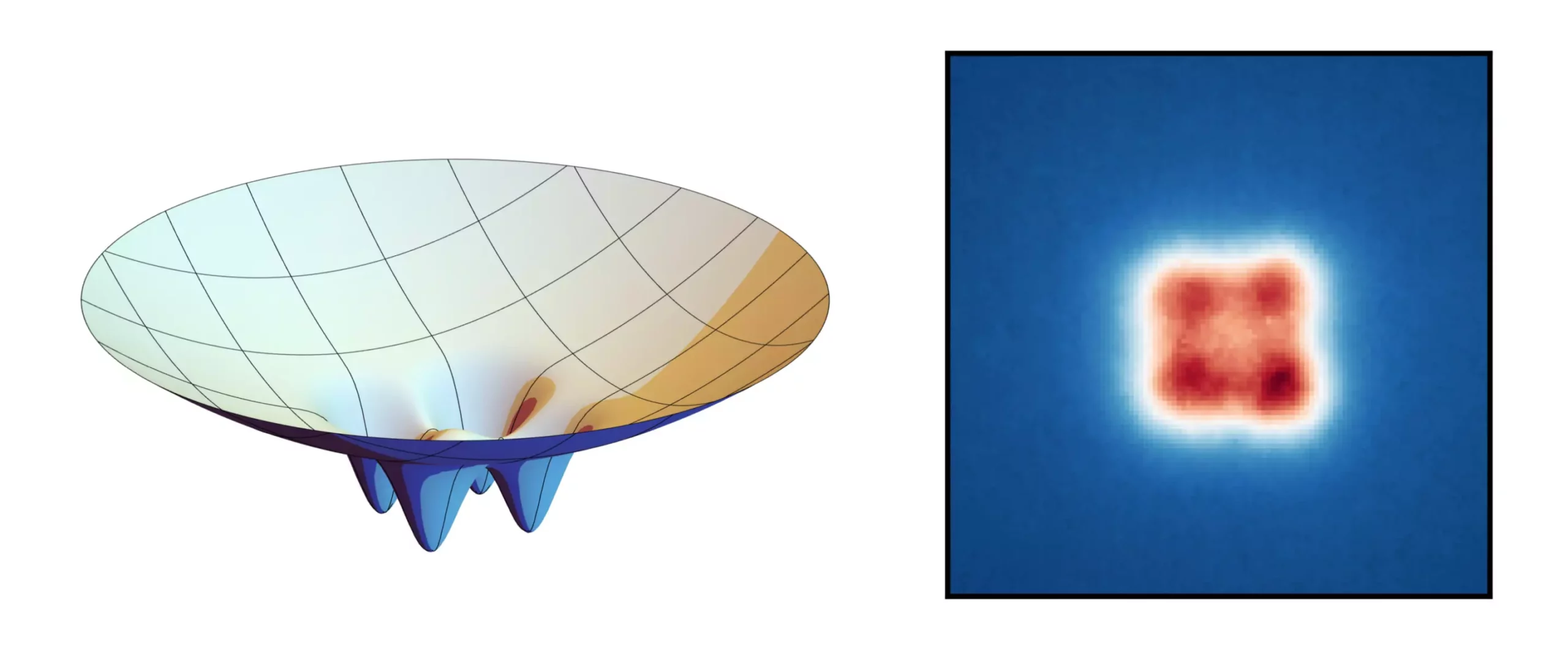In the realm of quantum physics, the phenomenon of Bose-Einstein condensates (BECs) marks a fascinating convergence of light and matter. This extraordinary state, wherein a vast quantity of light particles—specifically photons—coalesce at temperatures near absolute zero, engenders a singular entity that behaves collectively as a “super photon.” Pioneering research from the University of Bonn has illuminated new pathways in this field, showcasing how “tiny nano molds” can be employed to intricately shape these condensates into structured forms. This groundbreaking work offers profound implications, particularly in enhancing the security of quantum communications.
At the heart of this research lies the creation of super photons within specially designed containers filled with dye solutions. The experimental setup relies on reflective side walls that create a conducive environment for photons to traverse. By exciting dye molecules with laser energy, the resulting light particles bounce incessantly, gaining energy momentum. This chaotic dance of photons, however, is eventually curtailed—culminating in their condensation into BECs when they reach the desired low temperature through repeated collisions with dye molecules.
Through innovative engineering, researchers have transformed the traditionally smooth reflective surfaces of these containers into structured planes with designed indentations. According to physicist Andreas Redmann, this modification allows for the construction of lattice-like formations within the BEC. The analogy of placing a mold in sand is apt; just as the shape of the mold remains imprinted in the sand, these indents allow the condensate to favor specific regions, resulting in distinct points of light arranged in a quadrilateral formation.
The implications of this structured setup extend into the critical area of quantum entanglement—a phenomenon where particles intertwined at a quantum level remain connected, such that the change in one affects the other, no matter the distance separating them. The researchers’ theoretical exploration suggests that a BEC shaped across multiple lattice sites could facilitate communication among numerous participants, ensuring that their information exchanges remain tamper-proof against potential interception.
This capability is monumental for secure communication technologies, potentially paving the way for systems that can withstand eavesdropping attempts. The structured super photon could serve as a quantum network backbone, wherein the information encoded and transmitted remains intertwined between the lattice sites, ensuring that any unauthorized attempts to observe or intercept the communication would disturb the quantum state of the entire system.
Future Perspectives and Broader Applications
Furthermore, the research surmises that modifying the reflective surfaces can result in Bose-Einstein condensates systematized across an extensive array of lattice points. Conceptually, this could yield complexes of 20 or more interconnected sites, vastly increasing the potential for simultaneous, secure exchanges among multiple participants. Envisionations of future quantum communication networks envision such configurations at their core, promoting not only security but also efficiency in how information is relayed in real-time.
Moreover, while the immediate objectives are rooted in communication security, the implications of controlling light at these quantum levels could extend far beyond. Future explorations might open avenues into quantum computing, advanced sensor technology, or even improvements in imaging techniques used in various scientific fields. As the understanding of manipulated BECs expands, so too will their applications in both academia and industry.
The ongoing research from the University of Bonn exemplifies the cutting-edge developments in our grasp of light behavior and quantum mechanics. By cleverly utilizing engineered surfaces to mold Bose-Einstein condensates, scientists are not only unveiling the intricate connections within light particles but also setting the groundwork for the next generation of secure communication technologies. As we advance further into this quantum frontier, the merging of theory and application holds the promise of transformative changes that could redefine our understanding of information exchange in a digital world increasingly beset by security challenges.

